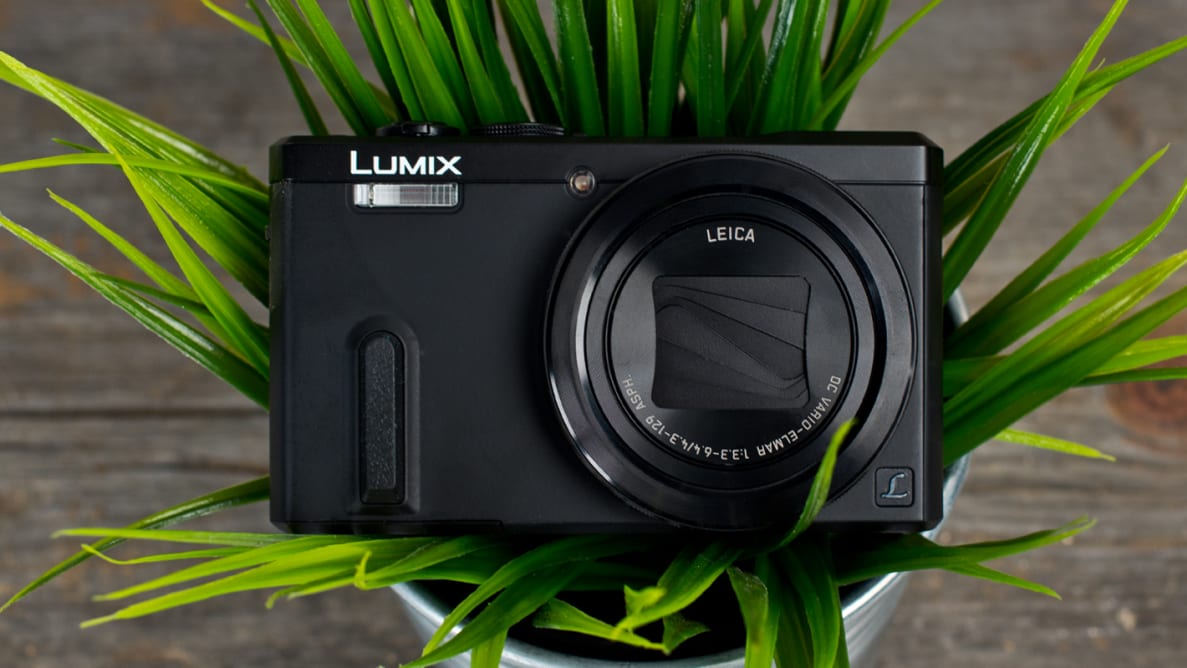Pros
Cons
Though the ZS20 and ZS30 were not poor cameras, they didn't feel as polished as other cameras in the Lumix lineup. It was almost as if Panasonic was simply trying to squeeze as much zoom as possible in with no regard for everything else a camera should do well. The ZS40 continues that trend by bumping the zoom to 30x, but it also offers a more complete experience, adding in an EVF and RAW shooting to go with WiFi and GPS.
But we've been here before. We had high hopes for the previous ZS-series cameras—until we got them in our lab and found them to be all bark, no bite. With stiff competition from the likes of the Canon PowerShot SX700 or the Sony CyberShot HX50V we had to see if Panasonic was finally able to return to the travel-zoom summit.
Design & Handling
It's a little larger than last year's model, but with good reason.
Aesthetically, the ZS40 looks like it means business. It's got a minimalist feel that, like any good travel companion, packs only what it needs. Compared to last year's ZS30 it's about 30 percent bigger and 42g heavier, but given all the upgrades—namely the new EVF and the larger zoom lens—the extra bulk is worth it.
The layout on top of the ZS40 has not changed, at all. There's the same crop of controls, including a mode dial, zoom toggle, power switch, record button, microphones, speaker, and shutter release all crammed up top. The rear of the camera is standard point-and-shoot layout with a command dial that doubles as setting selectors and four buttons with dedicated functions surrounding it. The best addition here is by far the new EVF, which is small, but functional, letting you frame even when you can't see the rear LCD.
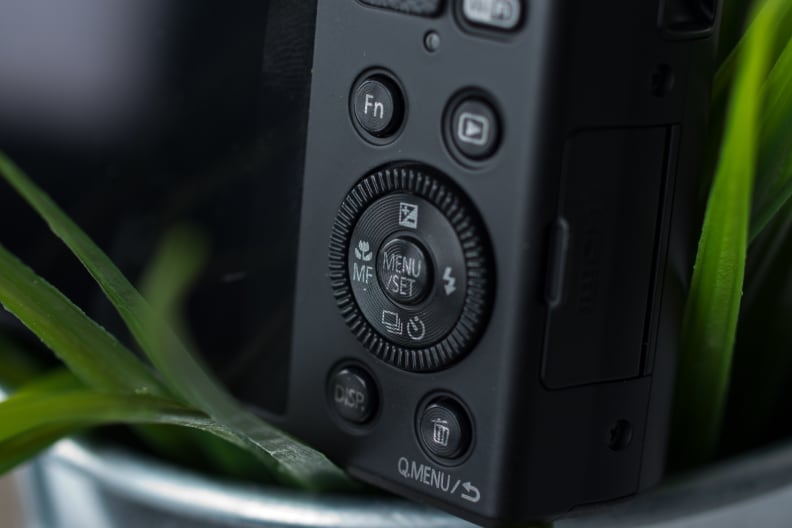
Controls are simple and straightforward.
The most notable subtraction from the ZS30 is the grip, which has gone from a chunky, curved grip to a mere strip of rubber. The practical effect is similar, but we prefer the ZS30's design. We've seen a similar cameras like the Nikon P340 trading in for this type of grip, but the P340 has only a 5x zoom. The ZS40 has a 30x optical zoom and, quite frankly, needs all the help it can get. Trying to stabilize the 24-720mm equivalent zoom at the longer focal lengths, with the lack of grip and generally slow autofocus, can be very tough. It far too often results in blurry images, even with the Hybrid Optical Image Stabilizer Plus.
{{ photo_gallery name="Tour" }}
Shooting with the ZS40 is fun and snappy, though, even if the focus speed makes capturing moving subjects from far away practically impossible. We're also big fans of the new front control ring. These used to be quite rare in the point-and-shoot category, but cameras like Sony's high-end RX100 series and Canon's S-series point-and-shoots have had them for a couple of years now. On the ZS40 you can set it to control things like zoom, aperture, shutter speed, manual focusing, and even creative control, giving you a quick and easy way to control whatever you think is most important.
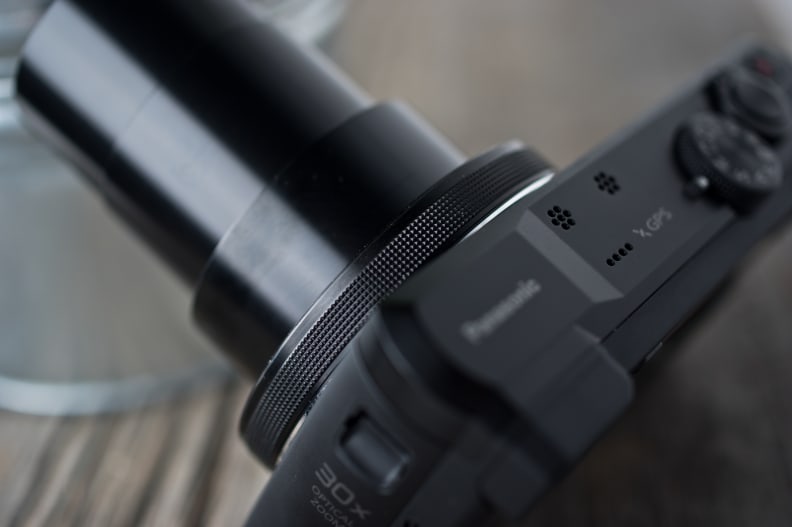
A lens-mounted control ring is adds versatility to the manual controls.
Performance
Good on paper, but merely mediocre in the lab.
At first blush there's a lot to like about the ZS40: 18.1MP sensor, 1080/60p video, 24-720mm f/3.3-6.4 Leica-branded zoom lens, and 10 frames per second (fps) burst shooting at full resolution. That sounds like a great camera. Unfortunately the ZS40 winds up being something less than the sum of its many parts, with overaggressive, heavy-handed noise reduction that too often smears away whatever fine detail your shots might've had.
{{ photo_gallery name="New Gallery" }}
It's not all bad, though. In our color accuracy and white balance tests the ZS40 did quite well. The default color mode was about as accurate as it gets in the point-and-shoot department. Color was very pleasing, with smooth gradation and the camera navigating often tricky areas like yellows and purples with ease. And as we've seen with other recent Panasonic cameras the white balance here is truly superb. Whoever designed this camera's auto white balance algorithm deserves a raise, because it rarely puts a foot wrong in or out of the lab.
From there, things take a turn downhill. For starters, the lens is just not good enough. It completely flunked the sharpness tests through most of the zoom range. This isn't a massive surprise, and it's due to a tricky little physics nugget called the diffraction limit. You can read about this issue in detail here, but in short on a small sensor with small pixels if the aperture is too small you'll get soft images, even with a great lens. Now, the lens here is by no means great, but hitting the diffraction limit as soon as you zoom even 1/3rd of the way through isn't helping matters.

In low light the ZS40 is better than older point-and-shoots, but not by much. The ISO range was extended up to ISO 6400 from 3200, but there's little practical reason why. The shots at ISO 6400 are essentially unusable, and ISO 3200 isn't much better. If you look at Rosie below, you will see that the loss of detail kicks in early and becomes crippling beyond ISO 1600. If you do reach ISO 6400 you will get an image more closely resembling an interpretive painting than a photograph.
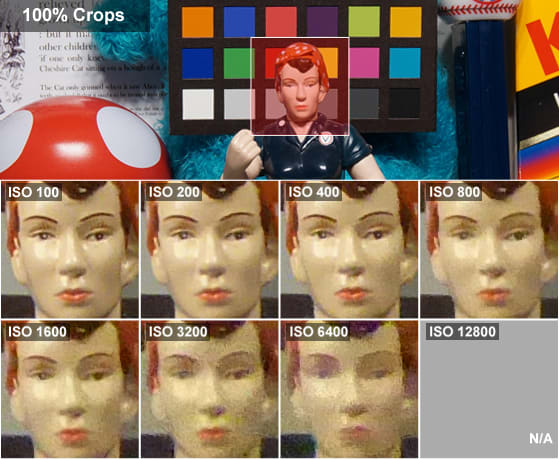
On the positive side, though, video quality wasn't terrible for 1080/60p. We saw decent sharpness in both low-light and bright-light settings, though again the same issues that plague still photo sharpness are problems in video. Low-light sensitivity got as low as 9 lux, which isn't terrible considering the lens is only f/3.3 when wide open. However, the video you get at 9 lux would be almost unusable, it will allow you to capture images in a tight spot when additional lighting isn't an option.
Features
Chock-full of useful extras, but the EVF truly sets it apart.
Even with the less than stellar performance in the lab, the ZS40 does offer a fair amount of features. One addition to the ZS40 that we were excited to see is the 0.2-inch EVF with 200K-dot resolution and 100% field of view. This is something new to the Z-series and offers better sight for framing shots more accurately. The resolution isn't great and 0.2-inches is puny compared to most EVFs, but it's better than nothing. Almost no other cameras in this class have any kind of a finder and those that do are either huge or cost twice as much money.
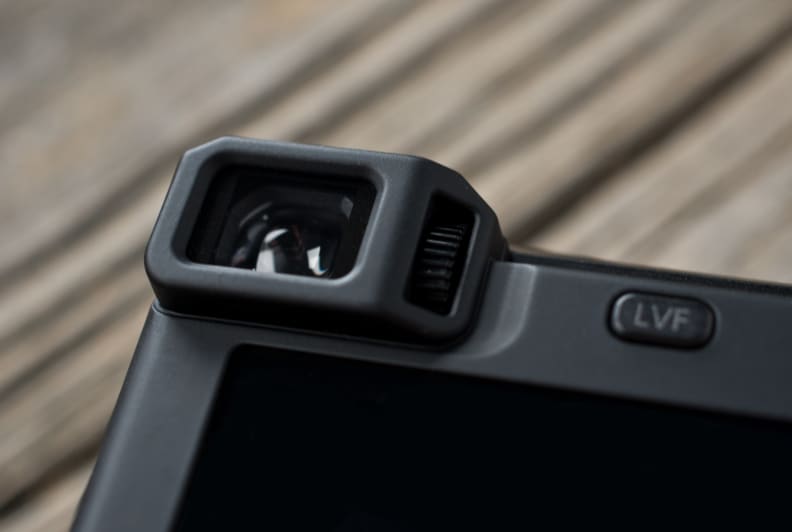
Electronic viewfinders are hot right now, but this one's not.
Beyond the finder, the 30x zoom is clearly the main reason to opt for the ZS40. However, due to the poor performance in the lab, the extra reach comes at a big knock to quality. If you absolutely need the 30x zoom then you won't have many options, but the ZS40 doesn't escape the same issues that have dogged other travel-zoom cameras with this level of zoom. The optical stabilization does help, but whatever sharpness it would've saved seems lost in the final photos.
The ZS40 also includes built-in WiFi and NFC that works in concert with the "Panasonic Image App" for your smartphone. Once your camera and phone are connected you can change settings, focus, and zoom all remotely with your phone. The app also allows you to transfer images from the camera to your mobile device or even post them straight to the web. Even if your mobile device isn't NFC-compatible, you can connect to the camera by scanning the QR code displayed on the camera monitor.
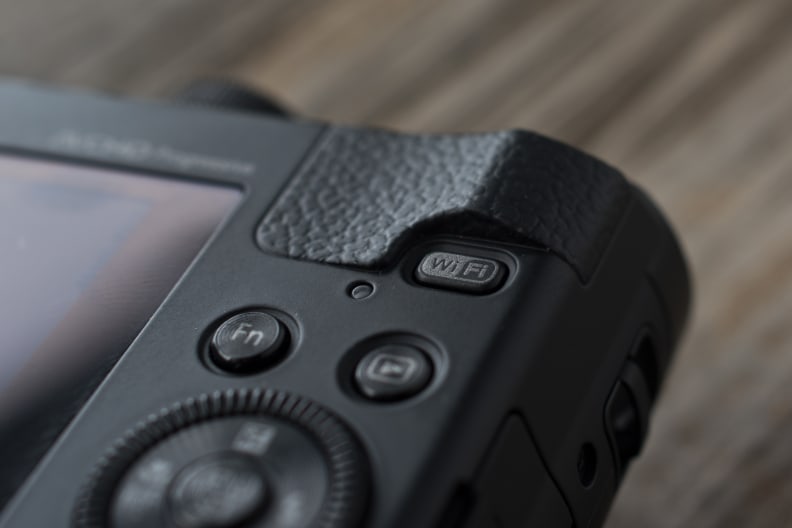
Sharing photos is quick with the WiFi toggle.
The ZS40 has an enhanced GPS (Global Positioning System) in the camera which complies with GLONASS (Global Navigation Satellite System), giving it an increased detection accuracy due to the use of more satellites. It's generally functional if you're outdoors and in a clear area. It's also better near large buildings—something that screwed up earlier camera GPS systems—but we found it was slow in general to lock on and completely useless indoors.
The ZS40 also boasts Panasonic's Creative Control filters which has a wide array of 15 different filters. These range from retro to toy effect and high key to dynamic monochrome. These filters add a fun way to make your images unique right on the camera while skipping the post processing. These can be used in tangent with the scene modes–such as starry sky and HDR–giving beginners the ability to get some cool shots with the click of a button. Creative Retouch and Creative Panorama shooting effects are also carried over in the ZS40.
Conclusion
A faustian bargain for zoom over quality
On the one hand we have to commend Panasonic for getting 30x optical zoom with optical stabilization into such a small body. There are simply very few cameras that can do what this camera can do. We're also big fans of the improved WiFi/GPS functionality, the control ring around the lens, RAW shooting, and—best of all—the new EVF. There's simply a lot to like here. The ZS40 is a camera that feels fun to shoot with that gives you the tools to get all kinds of different shots, complemented by a nice blend of creative modes and advanced controls.
But the main issue here is the 30x optical zoom lens just doesn't stand up to close scrutiny. Yes, it's impressive to have this much zoom in your pocket. But the knock-on effects of opting for a lens design like this—agonizingly slow autofocus speed when zoomed in, poor sharpness, a small sensor, and a small aperture that doesn't let in a lot of light—are tough to overcome. None of these problems are unique to the ZS40, of course, but the ZS40 doesn't do enough to escape the same issues we've seen with other superzoom cameras. The shots will be just fine for Facebook or for small prints, but as with other superzoom cameras we'd be hard-pressed to use full-zoom photos for any photos 8x10 or larger.
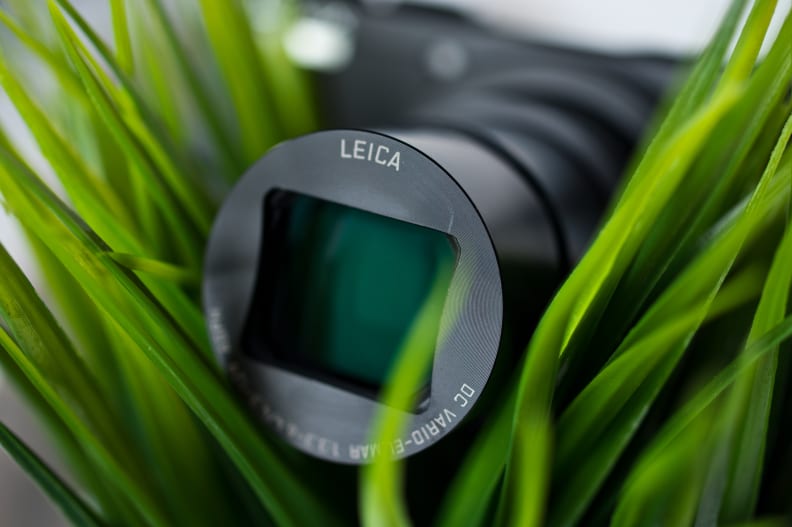
Extended zoom might have its issues, but 30x in your pocket is nigh unheard-of.
If you're absolutely set on getting a camera with this kind of zoom that can fit in your pocket then the ZS40 is not a bad choice. It stacks up well to competition like the Canon PowerShot SX700, which also has a 30x zoom but lacks an electronic viewfinder. The Sony HX50V is also a fine choice, but again: no EVF. You can also find those cameras for less money than the Panasonic, even with the ZS40 typically selling for close to $350—$100 off of its MSRP.
For our money, though, we'd prefer some of the high-end point-and-shoots that feature far less optical zoom but give you much better image quality for the money. No, cameras like the Canon S120, Panasonic LX7, and Sony RX100 can't zoom anywhere near as far as cameras like the ZS40. But if you give up that extra reach you get fantastic images that will mop the floor with what even brand-new smartphones are capable of.
By the Numbers
On paper, there's a lot to like about the Panasonic ZS40—but how does that translate into real-world shooting? Though this camera is one of the many that offer huge zooms, its defining feature is its biggest pitfall. Though the white balance and color accuracy were excellent, the small sensor (needed to reach the 30x zoom ratio) and the lens itself were both disappointments, especially in low light. Zooming in also just makes things worse, limiting the usability of the ZS40's defining feature.
Noise
It's a simple fact of life that when you have a tiny sensor, you're inviting issues at high ISO speeds. It's a tradeoff, but it's what allows you to cram that point and shoot in your pocket, so c'est la vie.
On the plus side, the ZS40's noise reduction algorithm does a fairly good job at keeping junk data at bay. It isn't until ISO 1600 that you find annoying levels of noise.
However, there's a massive tradeoff that'll have you re-thinking what I just said. This camera's noise reduction is aggressive, to put it bluntly. Not only does it attack junk data, but fine detail is also a casualty caught in the crossfire. It may not matter to you so much if you're only looking to take snaps to share on Facebook or Twitter, but if you're looking for the best quality prints, high ISO shots will stick out like a sore thumb.
Sharpness
Where the ZS40 takes a massive hit is sharpness, and it's obvious why. For most point and shoots, the longer you zoom, the more the lens has to close up the aperture. However, there is a point at which that has severe consequences for image quality for small sensors—the diffraction limit, about 1/3rd the way through the zoom range.
For point and shoots with a 1/2.3" sensor, that limit is when the aperture is just under f/5. So with a lens that goes from f/3.3-6.4, the camera hits that limit very quickly. Once you're at or beyond that limit it is very difficult for the camera to resolve very fine details. As details that should be pixel-sharp soften and blur your image begins to look softer than it would at larger apertures.
In doing so, edges and fine detail are ripped out even in perfectly-exposed shots at base ISO. If you zoom too far, edges will be wavy, details go missing, and your shots look more like an impressionist painting of what you shot than a photo. The issue is so bad that you'll even notice it in a small print. It's a common problem even among the best superzoom cameras with sensors this small. Unfortunately if you make the sensor any bigger you lose the zoom ratio that makes the ZS40 so appealing. You can make the lens bigger to compensate, but then you've got a bigger, heavier, more expensive camera that is no longer compact.
Color & White Balance
So diffraction is a huge issue for the camera, but color? Not so much. In fact, it's one of the better point and shoots out there in this regard.
In the default color profile, the ZS40 shows only a ∆C00 saturation error of 1.86, and an overall saturation of 103.8%. That's phenomenally good for a compact camera and easily better than most DSLRs. You shouldn't be able to find any visible fault in the color performance of the ZS40.
That also extends to white balance performance. Honestly, Panasonic cameras typically do well here, but the ZS40 is unbelievably good. I personally ran the results multiple times just to see if they were accurate, and even I was surprised.
Normally, a point and shoot will give you color temperature errors anywhere from 300 kelvin (at best) to 2500 kelvin (at worst) errors depending on the lighting environment. Incandescent light almost always throws an orange hue on your shots, fluorescent light green. However, the ZS40 is able to correct for these lighting conditions very quickly and accurately. Its worst error recorded was mid-gray: 390 kelvin. Two thirds of the recorded errors were under 100 kelvin, and even the ones that did cross above, only three were above 300 kelvin. That's nuts.
No need for constantly taking white balance readings—auto is perfectly fine on the ZS40. I don't think I've typed that before, but there it is.
Video
For close-up video, the Panasonic ZS40 does a passable job. In bright light, it's able to resolve about 525 LP/PH both horizontally and vertically—a decent mark for a point and shoot. In low light or as you zoom in resolution drops to 450 LP/PH due to the diffraction limit. That's a noticeable drop, but not anything we weren't expecting.
Subjective assessments back up the lab measurements. Smoothness is notably good, there's very little artifacting, though there is a bit of frequency interference. Overall, though, this is great for a point and shoot. As a bonus, the camera can capture 1080p video in 60 frames per second—meaning video that'll record action smoothly and should look good on any 1080p display.
One area where the ZS40 does succeed is low light sensitivity. In our tests it needed just 9 lux of light to record a usably bright video. Note that I called that "usably bright" and not "good quality" video. To get there the ZS40 ramps up its sensitivity, resulting in noisier video than you may be comfortable with. It should be find for candlelit birthday parties, but if you want high-quality video in those situations you'll want to opt for something more serious.
Meet the testers
As a photojournalist, Jackson has had stints working with bands, the military, and professional baseball teams before landing with Reviewed. Outside of Reviewed, he can be found looking for the next game to relieve his "Gamer ADD" or growing his beard.
A seasoned writer and professional photographer, Chris reviews cameras, headphones, smartphones, laptops, and lenses. Educated in Political Science and Linguistics, Chris can often be found building a robot army, snowboarding, or getting ink.
Checking our work.
Our team is here to help you buy the best stuff and love what you own. Our writers, editors, and experts obsess over the products we cover to make sure you're confident and satisfied. Have a different opinion about something we recommend? Email us and we'll compare notes.
Shoot us an email